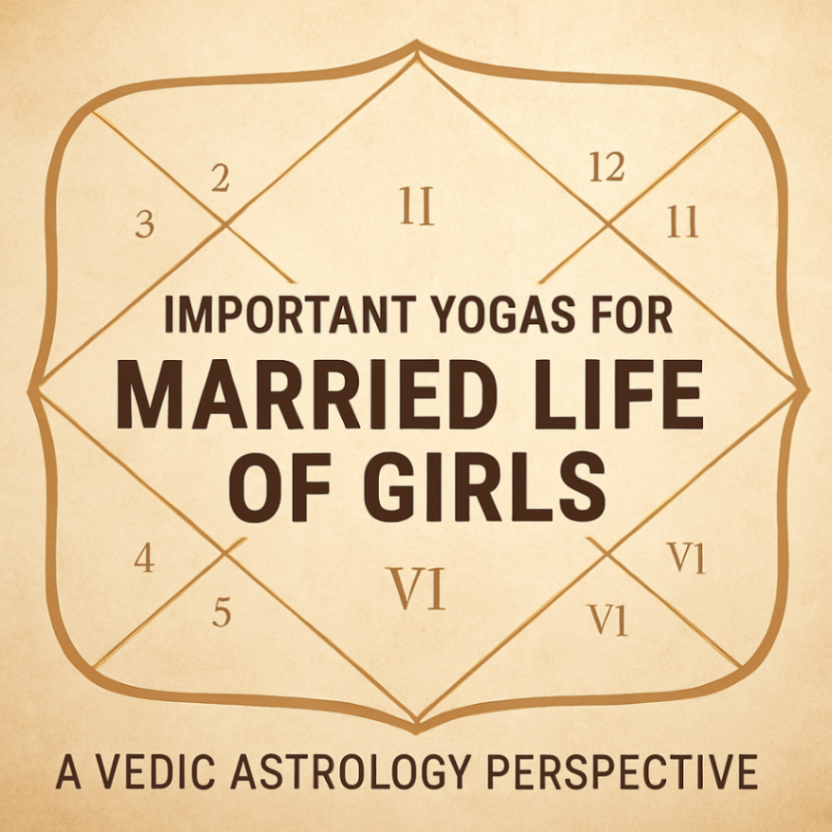Kalsarp Yoga in Vedic Astrology: An In-depth Exploration
Hope everyone is well. Today, we delve into a fascinating topic in Vedic astrology that has piqued the curiosity of many: Kalsarp Yoga. This concept, though not rooted in classical texts, holds immense intrigue for modern astrologers and enthusiasts alike. Lets explore its formation, effects, and how to interpret it.
Formation of Kalsarp Yoga
Kalsarp Yoga forms when all planets are situated between Rahu and Ketu in a persons birth chart. This alignment suggests that the individuals life is heavily influenced by the karmic axis represented by these two nodes. There are different types of Kalsarp Yoga based on the placement of Rahu and Ketu in the twelve houses of the horoscope.
Types of Kalsarp Yoga
Anant Kalsarp Yoga: Rahu in the first house and Ketu in the seventh house.
Kulik Kalsarp Yoga: Rahu in the second house and Ketu in the eighth house.
Vasuki Kalsarp Yoga: Rahu in the third house and Ketu in the ninth house.
Shankhpal Kalsarp Yoga: Rahu in the fourth house and Ketu in the tenth house.
Padma Kalsarp Yoga: Rahu in the fifth house and Ketu in the eleventh house.
Mahapadma Kalsarp Yoga: Rahu in the sixth house and Ketu in the twelfth house.
Taksak Kalsarp Yoga: Rahu in the seventh house and Ketu in the first house.
Karkotak Kalsarp Yoga: Rahu in the eighth house and Ketu in the second house.
Shankhnaad Kalsarp Yoga: Rahu in the ninth house and Ketu in the third house.
Ghatak Kalsarp Yoga: Rahu in the tenth house and Ketu in the fourth house.
Vishdhar Kalsarp Yoga: Rahu in the eleventh house and Ketu in the fifth house.
Sheshnag Kalsarp Yoga: Rahu in the twelfth house and Ketu in the sixth house.
Effects of Kalsarp Yoga
The presence of Kalsarp Yoga can lead to a life marked by extreme highs and lows. The individual might experience significant successes and failures, often influenced by external factors beyond their control. This alignment suggests a karmic bondage, where free will might be diminished, and destiny plays a crucial role.
Positive Effects (Kalsarp Yoga)
Potential for sudden and extraordinary success.
Gains through unusual means or speculative ventures.
Increased spiritual inclination and clarity of thought.
Strong intuitive abilities and insights.
Negative Effects (Kalsarp Dosha)
Frequent obstacles and challenges in life.
Health issues and mental stress.
Complications in relationships and family life.
Unpredictable financial ups and downs.
Identifying Kalsarp Yoga or Dosha
Determining whether the Kalsarp configuration in a chart is a Yoga (beneficial) or a Dosha (malefic) requires careful analysis. Here are some factors to consider:
Dispositor Strength: The strength of the planets ruling the signs where Rahu and Ketu are placed.
Conjunctions: If Sun, Moon, or the Ascendant Lord are conjunct Rahu or Ketu, the impact intensifies.
Nakshatra Influence: The nakshatra placements of Rahu and Ketu can provide deeper insights into their effects.
Interpreting Rahu and Ketus Influence
Rahu and Ketu are powerful indicators of karmic patterns and life lessons. Their placement in various houses affects different aspects of life:
First House Rahu and Seventh House Ketu
Positive: Global fame, cosmopolitan lifestyle, trend-setting potential.
Negative: Destabilized life, identity crisis, and megalomania.
Second House Rahu and Eighth House Ketu
Positive: Financial gains through research or occult practices, commendable accomplishments.
Negative: Family secrets, strong karmic encounters, and mental stress.
Third House Rahu and Ninth House Ketu
Positive: Courageous, resourceful, and pioneering abilities.
Negative: Mental restlessness, questionable company, and radical tendencies.
Fourth House Rahu and Tenth House Ketu
Positive: Successful in unusual professions, diplomatic, and influential.
Negative: Toxic emotions, manipulative tendencies, and unstable career.
Fifth House Rahu and Eleventh House Ketu
Positive: Creative, genius, and successful in speculative ventures.
Negative: Complications with progeny, radicalized beliefs, and discontented life.
Sixth House Rahu and Twelfth House Ketu
Positive: Competitive, inspiring through hardships, and supported by divine forces.
Negative: Health vulnerabilities, unknown enemies, and chaotic daily life.
Seventh House Rahu and First House Ketu
Positive: Intuitive, opportunistic, and influential.
Negative: Promiscuity, identity crisis, and self-loathing.
Eighth House Rahu and Second House Ketu
Positive: Transformative life, intuitive abilities, and scientific mindset.
Negative: Traumatic experiences, negativity sponge, and extreme values.
Ninth House Rahu and Third House Ketu
Positive: Favorable destiny, strong potential for historical impact.
Negative: Headstrong nature, misled by teachers, and reliance on lucky breaks.
Tenth House Rahu and Fourth House Ketu
Positive: Ambitious, workaholic, and path-breaking potential.
Negative: Unresolved issues with mother, targeted by competitors.
Eleventh House Rahu and Fifth House Ketu
Positive: Popular, immense wealth potential, and talent manifestation.
Negative: Discontented life, past life karmic baggage.
Twelfth House Rahu and Sixth House Ketu
Positive: Alternative reality, success away from drama, and scientific mind.
Negative: Chasing mirages, spiritual discontent, and powerful enemies.
Remedies for Kalsarp Yoga
For those facing challenges due to Kalsarp Yoga, several remedies can be beneficial:
Worship of Lord Shiva and recitation of the Mahamrityunjaya Mantra.
Performing the Beej Mantra chants for Rahu and Ketu.
Rudra Puja, especially for those with Moon in Rahus nakshatra.
Visiting temples dedicated to Lord Shiva, particularly during auspicious months.
Kalsarp Yoga need not be a cause for fear. With proper understanding and remedies, one can navigate its influences effectively, turning challenges into opportunities.




















